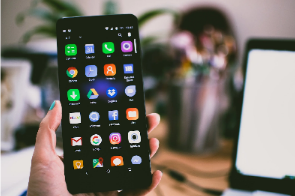Nowadays, many of us rely so much on our smart devices and all the handy apps available. But sometimes, we must think about what personal info we may be sharing just by using these apps. When you download a new app, it might ask you to approve different permissions to access your camera, location, contacts, etc. Although, some permissions are needed for the main features of an app. But others could risk your personal data and privacy if you’re not careful. It now begs the question, what app permissions should you allow? We’ll explore this and discover how to review and manage app permissions for privacy.
How Apps Access Data
App permissions are basically the types of access that mobile apps request from users to use various features and data on a device. When you install an app, you will be asked to approve some permissions that control what the app can do. These permissions determine how much access the app has to sensitive parts of your phone and information. If you approve these permissions, you are essentially giving apps permission to utilize certain capabilities, which could include letting them see your precise location, access private photos, read or modify contacts, enable the microphone, and more.
How To Check and Manage Your App Permission Settings
It’s important to routinely review the permissions each app currently has access to on your device. Both Android and iPhone make it easy to check installed apps and the data/features they can utilize. However, as part of regularly checking apps, you may also decide an app is no longer needed. By deleting apps that you don’t use, you free up storage space and remove unnecessary data access. It’s simple to delete apps, but you want to ensure you fully uninstall them to prevent issues.
Many people only know how to delete apps by long pressing its icon on the home screen until it jiggles, then tapping “Remove App.” This may only remove it from your home screen, but it doesn’t completely remove app from iPhone. And this could also leave behind data or bugs over time. However, to thoroughly uninstall apps on iPhone, go to Settings, click on General, and check your iPhone Storage to see a full list. Look for the app you want to uninstall. Once you find it, tap for more options and select “Delete App.” This ensures it’s fully erased along with any files.
We all install lots of apps on our phones over time. So, it’s a good security practice to review the apps and permissions on your devices routinely. Here is how to manage your app permission settings on your Android or iPhone seamlessly:
On Android:
- Open Settings > Apps & notifications > App permissions
- See all permission categories like location, contacts, etc.
- Tap one to check which apps currently have that permission enabled
- You can also open any app’s detail page from the full apps list to view and adjust settings.
On iPhone:
- Go to Settings > Privacy
- Here, you will find sections for permissions like Photos, Contacts, Microphone, etc.
- Tap one to see which apps recently accessed it
- You can also open each app individually in Settings to modify access
What App Permissions Should I Allow or Avoid
When a new app asks for permission to access different parts of your phone, you can easily feel like you have to approve everything right away. But first, you must think about the purpose of the app. Don’t feel pressured to allow all or nothing. So, after you review them, allow those that are vital but deny any ambiguous, unaligned, or broad permissions that raise red flags.

Here are some common app permissions recommendations on whether they should generally be allowed or avoided:
Location Services
This lets apps see where you are. For apps like maps, navigation, local news, etc., it’s clearly important. But other apps that are accessing location constantly could be tracking you. So it would help if you limited location permission to only ‘While Using’ the app.
Camera
The camera grants extensive access to your device’s media. So, it should only be allowed for photo/video apps, QR scanners, document scans, etc. Before approving full camera control, you must carefully scrutinize other apps requesting access for valid reasons.
Microphone
Microphone permission should only be approved for things like voice assistants, music apps, voice memos, and language translators. But when random games or movie apps request private audio permission, you should be suspicious and deny access.
Also Read: 7 Best Bass Booster App for Android to Improve Sound Quality
Contacts and Address Book
It’s usually okay to share contacts with communication apps for calling or messaging friends. Social platforms may legitimately view your circles, too. But other uses should be questionable unless it is clearly stated how contacts are important for their core functions.
Personal Data and Other Permissions
If need be, you should carefully review and revoke permissions asking to read personal data files containing health data, banking information, passwords, photos, and other sensitive information. The same should be done for apps requesting to send messages on your behalf. In many cases, they aren’t actually needed, especially when the app doesn’t have a genuine need for such access.
Maintain and Manage Your Privacy
Apps are handy and add convenience to our lives, but they also come with implications for our personal data. So, we must review the permissions we give them to help us feel more in control of our personal data. You can spend a few minutes each week cleaning up unused apps, revoking unnecessary access, and generally tightening your security.

